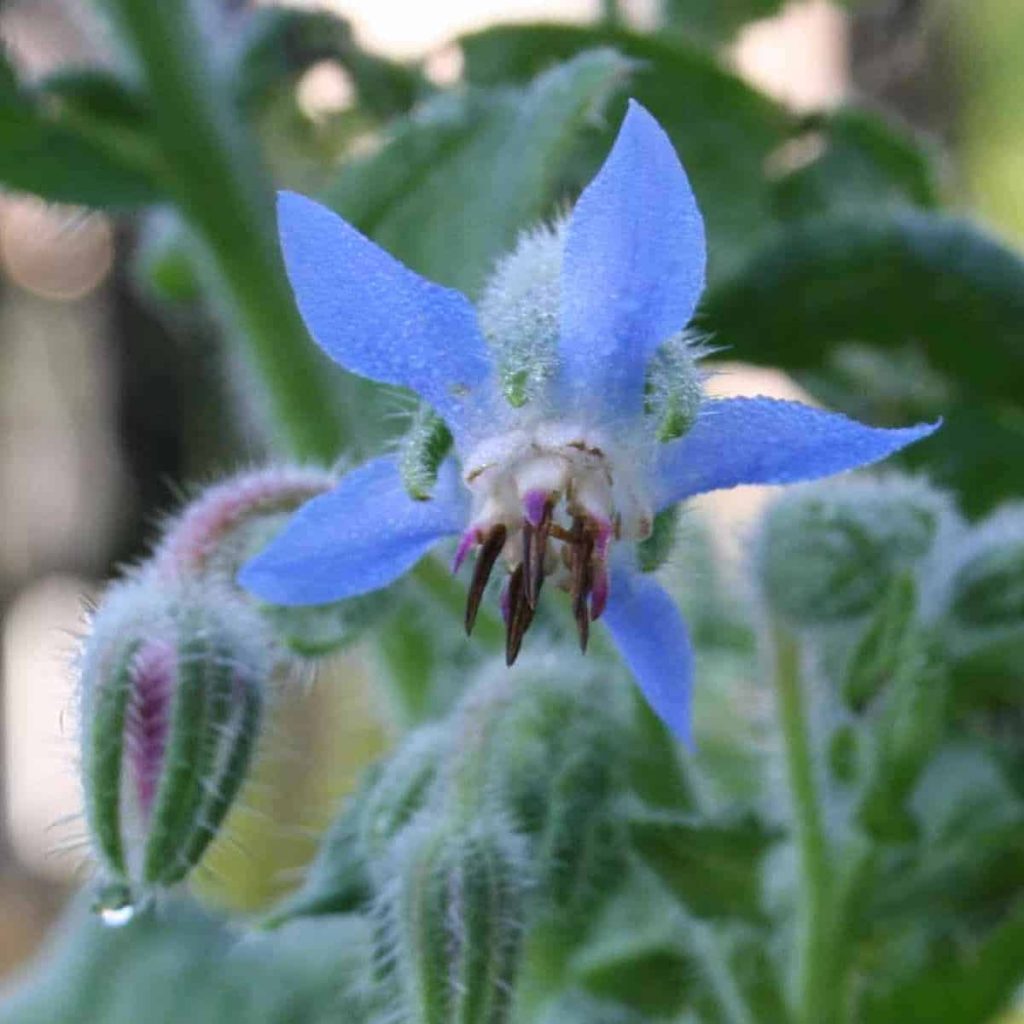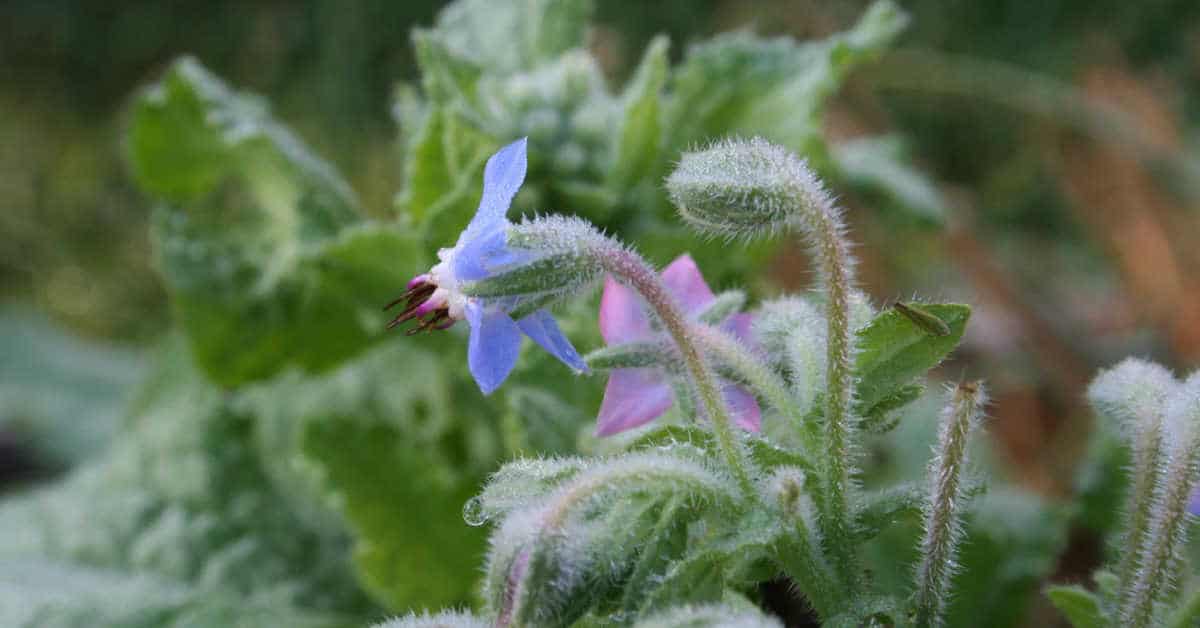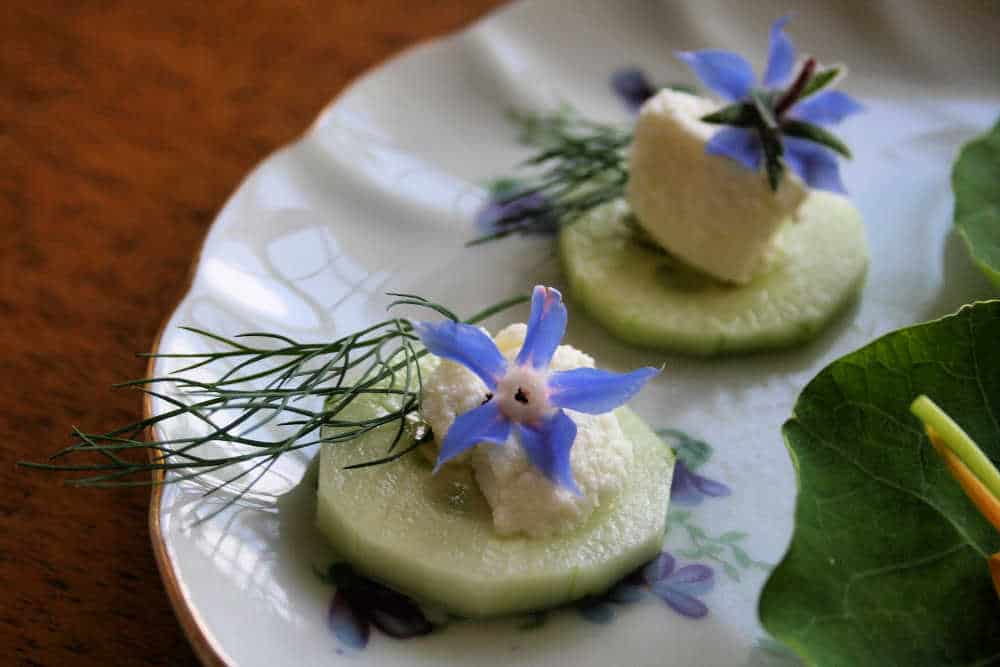Plant Profile: Borage (Borago officinalis)
Botanical Name: Borago officinalis
Light Requirement: Borage thrives in full sunlight but can tolerate partial shade. It is generally a sun-loving herb that benefits from at least 6 hours of direct sunlight daily.
Water Requirements: Borage is a drought-tolerant herb once established but prefers consistently moist soil. Water regularly, especially during dry periods. Ensure well-drained soil to prevent waterlogging, which can lead to root rot.
Fertilizer and Soil Requirements: Borage prefers well-draining, moderately fertile soil with a pH between 6.0 and 7.0. It tolerates many soil types but thrives in soil enriched with organic matter. Fertilization may not be necessary if the soil is already nutrient-rich. However, a balanced, all-purpose fertilizer can be applied sparingly during the growing season.
Hardiness Zones: Borage is an annual herb in most climates. It can be grown as a perennial in USDA hardiness zones 6 and above. Borage readily self-seeds, often returning in subsequent growing seasons.
How to Start New Borage Plants
Seeds
Borage is commonly grown from seeds. Directly sow seeds in the garden after the last frost date—plant seeds 1/4 to 1/2 inch deep in well-draining soil. Seeds typically germinate within 7-14 days.
Borage tends to self-seed prolifically. Once established, the plant will often drop seeds that germinate in the surrounding area. Allow some plants to go to seed, and new borage plants will emerge in the next growing season.
Transplants
Borage can also be started indoors 4-6 weeks before the last expected frost. Transplant seedlings into the garden once they are large enough to handle and the danger of frost has passed.


Borage Herb – Plant Profile
Borage is an herb known for its bright blue, star-shaped flowers and mild cucumber-like flavor, making it a popular choice for culinary and medicinal uses. The plant is also valued in the garden for attracting pollinators, such as bees, making it a beneficial companion plant for other crops. It is important to note that borage can spread rapidly, and its self-seeding nature should be considered when planning its location in the garden.
I fell in love with borage from a picture in a seed catalog. After purchasing the seeds, I planted a few in my raised bed garden next to the chervil and chives. Little did I know that borage is a prolific self-seeder (I included that in this new borage plant profile to make sure you know, too!). But it is also a wonderful plant to attract pollinating insects. My garden just isn’t complete without borage.
How to Use Borage
Wellness
Did you know that borage flowers are more than just a pretty sight in the garden? They are also commonly harvested for their many health benefits.
It’s important to note that while borage has several potential uses, individuals should exercise caution and consult with healthcare professionals before using it for medicinal purposes, especially in the form of supplements or extracts. Additionally, pregnant or breastfeeding women should avoid borage due to potential risks.
Anti-Inflammatory Properties
Borage is known for its anti-inflammatory properties, primarily due to the presence of gamma-linolenic acid (GLA). It has been traditionally used to alleviate symptoms of inflammatory conditions.
Skin Conditions
Some people use borage oil topically for skin conditions such as eczema and dermatitis. The GLA in borage oil is believed to contribute to its skin-healing properties.
Garden Uses
Companion Planting
Borage makes a great companion plant in the garden. It attracts pollinators, especially bees, and helps improve the garden’s overall health.
Cooking with Borage: Culinary Uses
Borage flowers are edible and can be used in various culinary applications to add both flavor and visual appeal to dishes. You can use them to top off a salad or make an attractive appetizer as I did here.
These are cucumber slices topped with ricotta cheese, dill, and borage flowers.

Herbal Infusions
Borage flowers infuse liquids such as water, vinegar, or oil with their delicate flavor. For example, steep borage flowers in vinegar to create a floral-infused vinegar that can be used in dressings or marinades.
Decorative Ice Cubes
Freeze borage flowers in ice cubes to create decorative and refreshing additions to beverages. Simply place a few flowers in each compartment of an ice cube tray, fill it with water, and freeze until solid.
Candied Flowers
Borage flowers can be candied and used to decorate cakes, cupcakes, and other desserts. To candy borage flowers, dip them in beaten egg white, then sprinkle with sugar and let them dry on a wire rack.
Herb Butter
Mix chopped borage flowers into softened butter along with other herbs and seasonings to create a flavorful herb butter. Spread it on bread, melt it over grilled meats or vegetables, or incorporate itinto savory dishes.
Plant Profile: Borage – Choose Organic in Recipes
When using borage flowers in recipes, it’s important to ensure they are free from pesticides or other contaminants. Additionally, as with any edible flower, consume borage flowers in moderation, especially if you have allergies or sensitivities.




